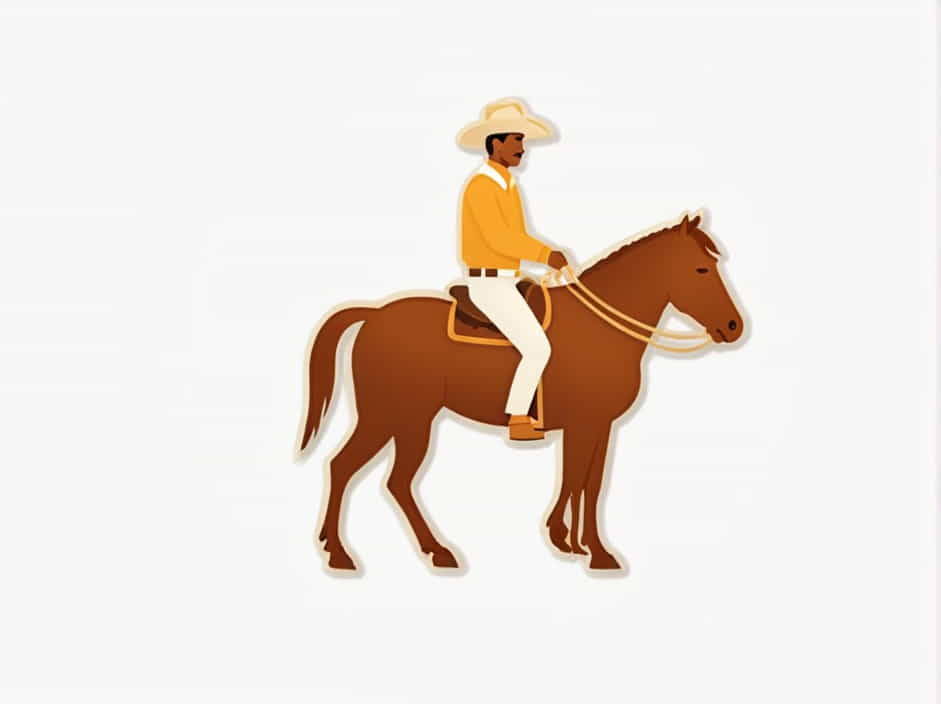The vast grasslands of South America, known as the Pampas, stretch across Argentina, Uruguay, and southern Brazil. This region is home to one of the most iconic figures in Latin American history: the Gaucho, a mounted cattleman who has become a symbol of freedom, skill, and tradition.
The Gauchos played a crucial role in cattle ranching, territorial expansion, and cultural development in the Pampas. Today, they are still celebrated for their unique way of life, distinctive attire, and legendary horsemanship.
This topic explores the history, lifestyle, and enduring legacy of these South American cowboys.
Origins of the Gauchos
The Gaucho culture began to take shape in the 17th and 18th centuries, as Spanish colonists introduced cattle and horses to the Pampas. These animals thrived in the region’s vast plains, leading to the rise of nomadic horsemen who hunted wild cattle for their hides and meat.
The word “Gaucho” likely comes from the Quechua or Arabic languages, referring to independent, rugged men who lived off the land. Initially, Gauchos were mestizos (mixed Indigenous and European ancestry), but over time, they included people of Spanish, African, and Indigenous descent.
The Gaucho Lifestyle
Gauchos lived a semi-nomadic existence, roaming the Pampas on horseback, relying on their skills as cattle herders and hunters. Their lives revolved around ranching, horseback riding, and survival in the wild.
Horseback Riding and Cattle Herding
Gauchos were expert horsemen, spending most of their lives on horseback. They developed special skills in:
- Roping and branding cattle
- Breaking and training wild horses
- Long-distance cattle drives
Their skills were essential for the expanding cattle industry in Argentina and Uruguay, as beef became a major export product.
Traditional Attire of the Gaucho
Gauchos wore distinctive clothing suited for life on the Pampas:
- Bombachas – Loose-fitting trousers tucked into boots.
- Poncho – A multipurpose woolen cloak, used as a coat, blanket, or saddle pad.
- Chiripà¡ – A cloth worn over bombachas, similar to a sarong.
- Wide-brimmed hat or boina – To protect against the sun.
- Facà³n – A long knife carried in a belt, used for work and self-defense.
- Espuelas (spurs) – Metal spurs attached to boots for controlling horses.
Gaucho Weapons and Tools
Apart from their facà³n (knife), Gauchos were known for using:
- Boleadoras – A set of weighted balls tied with leather straps, thrown to entangle cattle legs.
- Lasso (Lazo) – A long rope used for catching cattle.
- Rebenque – A short leather whip for controlling horses.
The Role of Gauchos in History
Gauchos were not just cattle herders; they played a crucial role in the independence movements of South America.
Gauchos in the Wars of Independence
During the early 19th century, Gauchos fought against Spanish colonial rule. Many joined José de San Martàn in Argentina’s war for independence. Their ability to navigate the Pampas, launch surprise attacks, and live off the land made them formidable warriors.
Gauchos and the Expansion of Ranching
After independence, Gauchos helped establish large cattle ranches (estancias), contributing to Argentina and Uruguay’s rise as major beef exporters. However, as cattle ranching became more industrialized, the free-roaming lifestyle of the Gaucho declined.
Gaucho Culture and Traditions
The Payada: Gaucho Music and Poetry
Gauchos expressed themselves through music, poetry, and storytelling. One of their most famous traditions is the Payada, a form of improvised singing accompanied by a guitar. Payadores (singers) engaged in musical duels, challenging each other with poetic verses.
Mate: The Traditional Drink of Gauchos
Gauchos are closely associated with Mate, a traditional South American drink made from the Yerba Mate plant. They drink it from a hollowed-out gourd using a metal straw (bombilla). Mate is a symbol of hospitality and camaraderie among Gauchos.
Asado: The Art of Barbecue
Gauchos are masters of grilling meat, a tradition known as Asado. They cook beef over an open fire, using simple seasonings. This cooking style remains a central part of Argentine and Uruguayan cuisine today.
The Gaucho in Modern Times
Preserving Gaucho Traditions
Although the era of the nomadic Gaucho has largely disappeared, their traditions are still celebrated:
- Gaucho festivals (Fiesta Nacional del Gaucho) in Argentina.
- Traditional rodeos (Doma y Folklore) where horse-riding skills are showcased.
- Folkloric music and dance performances.
Gauchos and Tourism
Today, many estancias (ranches) in Argentina and Uruguay offer Gaucho experiences for tourists. Visitors can:
- Ride horses across the Pampas.
- Watch cattle herding demonstrations.
- Enjoy traditional Gaucho food and music.
The Gaucho as a National Symbol
The Gaucho remains an important figure in South American identity, representing:
- Freedom and independence
- Hard work and resilience
- Pride in rural traditions
In Argentina, the Gaucho is as iconic as the cowboy in North America, appearing in literature, film, and national celebrations.
The mounted cattlemen of the South American Pampas, known as Gauchos, played a vital role in shaping the history, economy, and culture of Argentina, Uruguay, and Brazil. Their horsemanship, cattle-ranching skills, and independent spirit continue to inspire generations.
Although the traditional nomadic lifestyle of the Gaucho has faded, their traditions, music, and influence remain deeply embedded in South American identity. From their legendary horse-riding skills to their famous barbecue traditions, Gauchos will forever be celebrated as the guardians of the Pampas.
